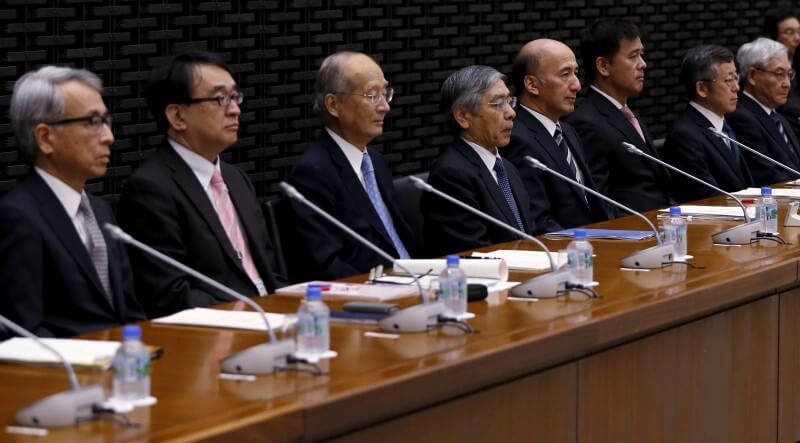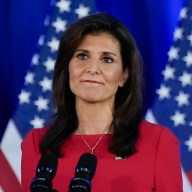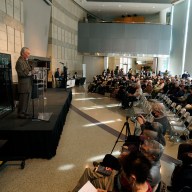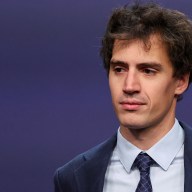By Leika Kihara
TOKYO (Reuters) – Dissenters to the Bank of Japan’s stimulus measures remain a minority on its board, but their call to scrap the timeframe for its inflation target is gaining converts and casting doubt on the credibility of bank governor Haruhiko Kuroda and his broader program. In a bid to end two decades of debilitating deflation, Kuroda began a huge money-printing program when he took office in 2013, tied to a two-year target to push inflation to 2 percent.
Three years on, despite the bank’s printing 80 trillion yen ($780 billion) a year to buy government bonds and adding negative interest rates to its loose-money measures in January, prices are falling. The two-year target remains official policy, blind eyes turned to its failures during a series of resets. “There’s a growing sense the BOJ is running out of ammunition,” said a source familiar with policymakers’ thinking. “In terms of persisting with the timeframe, the governor may have become a minority on the board.” Arch dissenter Takahide Kiuchi, the nine-member board’s only current proponent of tapering the bond-buying, said last week the BOJ should review its negative interest rate policy and inflation target timeframe. Earlier this month board member Takehiro Sato also criticized negative rates and said the inflation timeframe should be modified to suit a longer-term battle against deflation.
Sources familiar with the bank’s thinking say a growing number of policymakers privately sympathize with the call for more time and flexibility on the inflation target.
That has been qualifying their public endorsement of the broader program.
Makoto Sakurai, who joined the board in April, said that while he supported Kuroda’s monetary experiment, the BOJ should not expand stimulus recklessly to hasten the inflation target.
Others, like board members Koji Ishida and Yukitoshi Funo, signaled their doubts on the effects of negative interest rates and the feasibility of further such cuts.
“What’s clear is we can’t keep cutting rates forever. At some point, we’ll reach a level considered as the floor for rates,” Funo told reporters in March.
Kazuo Momma, a former top BOJ bureaucrat who oversaw its international affairs and monetary policy until May, says ditching the timeframe will allow for more realistic inflation forecasting and avoid market speculation of easing whenever prices undershoot the projections. “To drastically change people’s mindset, it made sense to set a specific timeframe in 2013 … But in reality, it’s taking longer than expected to hit the target,” he said. “If it becomes clear that inflation won’t hit 2 percent during fiscal 2017, the board may start debating a more flexible approach on the timeframe.”
LOST FAITH
The doubts reflect growing anxiety within the BOJ over the diminishing returns of its stimulus policies, and the rising costs, such as drying up liquidity in the bond market and squeezing bank profits. There are also misgivings about how the BOJ could ever safely unwind a policy that has swelled its balance sheet to roughly 80 percent the size of Japan’s economy, much bigger than the Federal Reserve’s 25 percent. Some say even though Kuroda publicly keeps faith with the timeframe, consumers have lost theirs, and it is no longer driving the bank’s policy response.
“Kuroda may persist in the timeframe, but the trigger for action seems to have shifted to external shocks like Brexit,” said Hideo Kumano, chief economist at Dai-ichi Life Research Institute. “His attempt to change the public’s perception on prices with monetary easing has failed.” With prices hit by slumping oil costs and weak consumption, the BOJ has pushed back the timeframe several times, most recently in April.
Core consumer inflation fell in March and April, and a Reuters poll of economists expects it to fall 0.4 percent year on year in May, the fastest drop since 2013.
The BOJ is still saying it expects Japan to see 2 percent inflation by the March 2018 end of fiscal 2017. Analysts think it will barely reach 1 percent by then.
The International Monetary Fund has joined the skeptics.
“We think it makes sense soon to have a realistic assessment of the time profile for achieving the target,” IMF Deputy Managing Director David Lipton told reporters last week.
Lawmakers also appear to be losing faith in the BOJ’s ability to change the economic weather, backing down on calls for more monetary easing and instead urging Prime Minister Shinzo Abe to compile a big fiscal spending package. The government is willing to spend at least 10 trillion yen in a package of steps to spur growth, sources have told Reuters.
($1 = 102.3800 yen)
(Reporting by Leika Kihara; Editing by Will Waterman)
BOJ skeptics calling time on Kuroda’s two-year target

By Leika Kihara
















